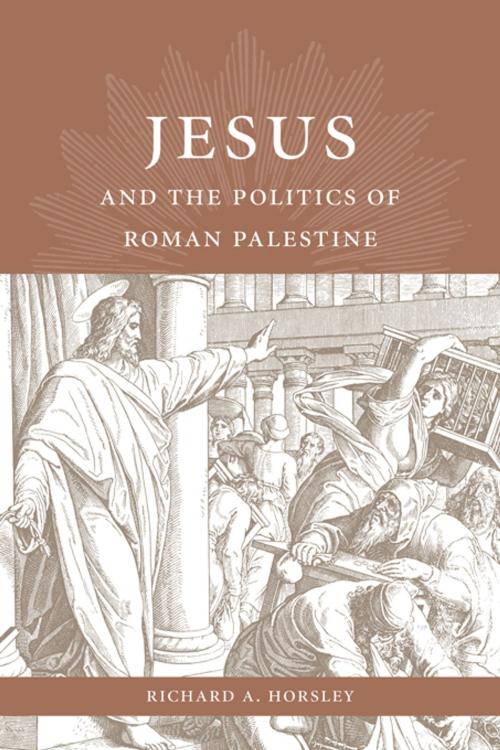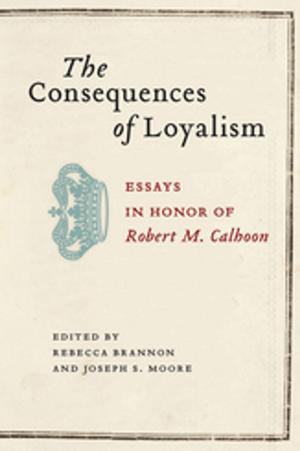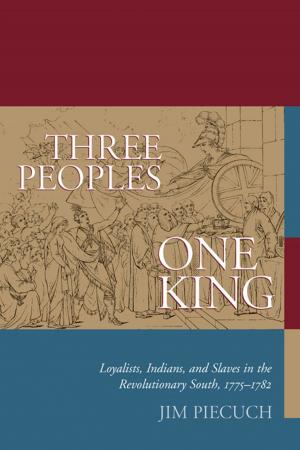Jesus and the Politics of Roman Palestine
Nonfiction, Religion & Spirituality, Bible & Bible Studies, New Testament, Study| Author: | Richard A. Horsley | ISBN: | 9781611172942 |
| Publisher: | University of South Carolina Press | Publication: | December 17, 2013 |
| Imprint: | University of South Carolina Press | Language: | English |
| Author: | Richard A. Horsley |
| ISBN: | 9781611172942 |
| Publisher: | University of South Carolina Press |
| Publication: | December 17, 2013 |
| Imprint: | University of South Carolina Press |
| Language: | English |
In Jesus and the Politics of Roman Palestine, Richard A. Horsley offers one of the most comprehensive critical analyses of Jesus of Nazareth’s mission and how he became a significant historical figure. In his study Horsley brings a fuller historical knowledge of the context and implications of recent research to bear on the investigation of the historical Jesus. Breaking with the standard focus on isolated individual sayings of Jesus, Horsley argues that the sources for Jesus in historical interaction are the Gospels and the speeches of Jesus that they include, read critically in their historical context. This work addresses the standard assumptions that the historical Jesus has been presented primarily as a sage or apocalyptic visionary. In contrast, based on a critical reconsideration of the Gospels and contemporary sources for Roman imperial rule in Judea and Galilee, Horsley argues that Jesus was fully involved in the conflicted politics of ancient Palestine. Learning from anthropological studies of the more subtle forms of peasant politics, Horsley discerns from these sources how Jesus, as a Moses- and Elijah-like prophet, generated a movement of renewal in Israel that was focused on village communities. Following the traditional prophetic pattern, Jesus pronounced God’s judgment against the rulers in Jerusalem and their Roman patrons. This confrontation with the Jerusalem rulers and his martyrdom at the hands of the Roman governor, however, became the breakthrough that empowered the rapid expansion of his movement in the immediately ensuing decades. In the broader context of this comprehensive historical construction of Jesus’s mission, Horsley also presents a fresh new analysis of Jesus’s healings and exorcisms and his conflict with the Pharisees, topics that have been generally neglected in the last several decades.
In Jesus and the Politics of Roman Palestine, Richard A. Horsley offers one of the most comprehensive critical analyses of Jesus of Nazareth’s mission and how he became a significant historical figure. In his study Horsley brings a fuller historical knowledge of the context and implications of recent research to bear on the investigation of the historical Jesus. Breaking with the standard focus on isolated individual sayings of Jesus, Horsley argues that the sources for Jesus in historical interaction are the Gospels and the speeches of Jesus that they include, read critically in their historical context. This work addresses the standard assumptions that the historical Jesus has been presented primarily as a sage or apocalyptic visionary. In contrast, based on a critical reconsideration of the Gospels and contemporary sources for Roman imperial rule in Judea and Galilee, Horsley argues that Jesus was fully involved in the conflicted politics of ancient Palestine. Learning from anthropological studies of the more subtle forms of peasant politics, Horsley discerns from these sources how Jesus, as a Moses- and Elijah-like prophet, generated a movement of renewal in Israel that was focused on village communities. Following the traditional prophetic pattern, Jesus pronounced God’s judgment against the rulers in Jerusalem and their Roman patrons. This confrontation with the Jerusalem rulers and his martyrdom at the hands of the Roman governor, however, became the breakthrough that empowered the rapid expansion of his movement in the immediately ensuing decades. In the broader context of this comprehensive historical construction of Jesus’s mission, Horsley also presents a fresh new analysis of Jesus’s healings and exorcisms and his conflict with the Pharisees, topics that have been generally neglected in the last several decades.















